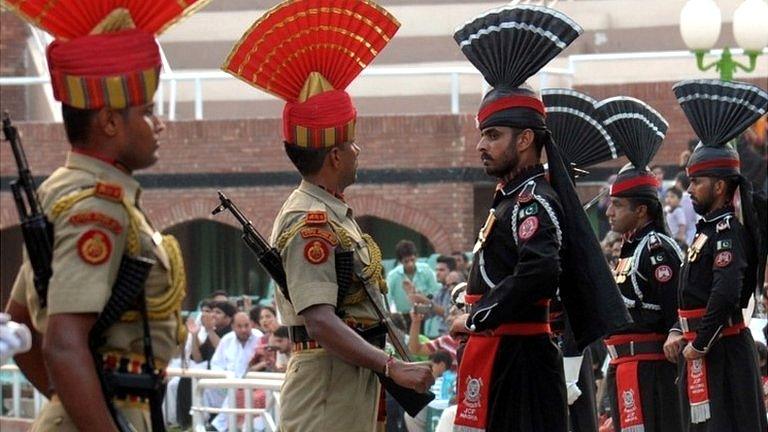Photographic treasures from India
- Published
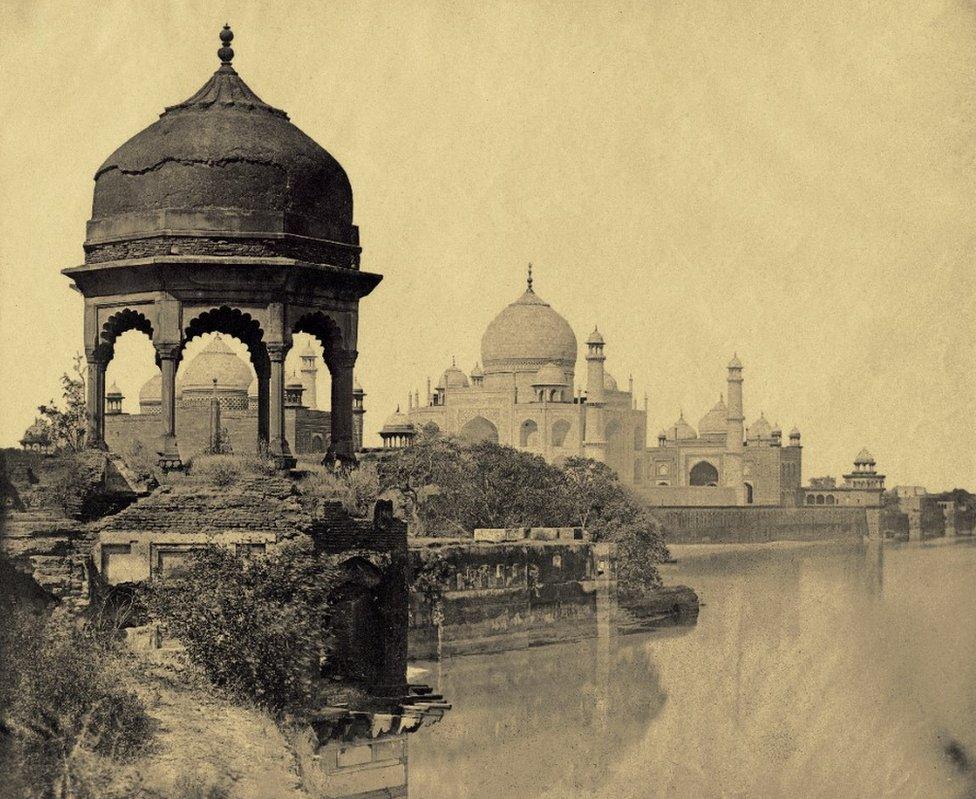
Felice Beato was one of the earliest war photographers, travelling to India having already shot groundbreaking coverage of the Crimean War. Images such as this one of the Taj Mahal were shot two years after the 1857 Indian Rebellion, at the site of the Battle of Agra. Other images from the series show bones Beato dug up specifically for his photographs.
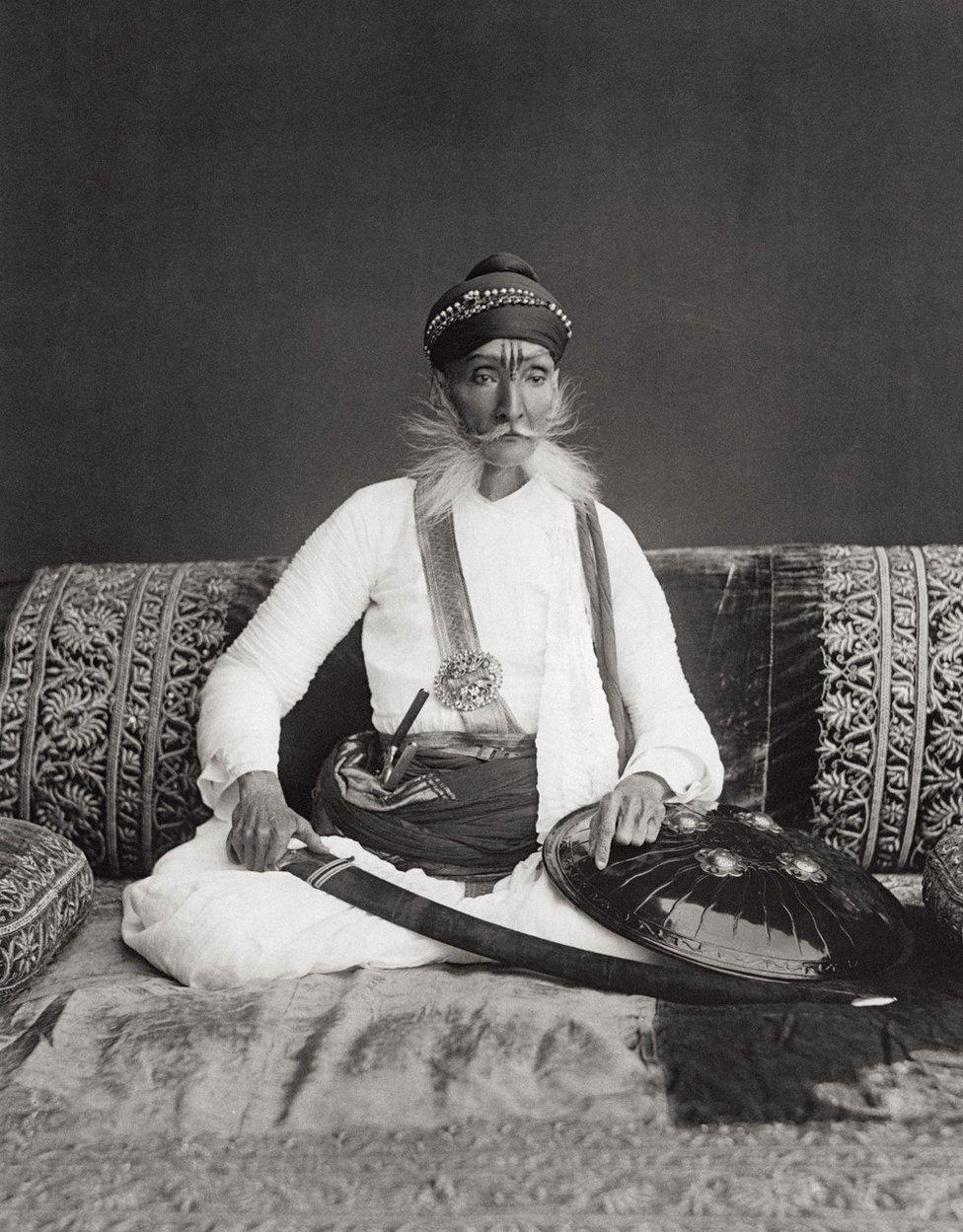
A note with this striking portrait of Maharao Raja Ram Singh Sahib Bahadur, of Bundi, describes him as a “wild fellow”. This image was taken from a four-volume album of photogravure prints, the only other copy belonging to Queen Victoria.
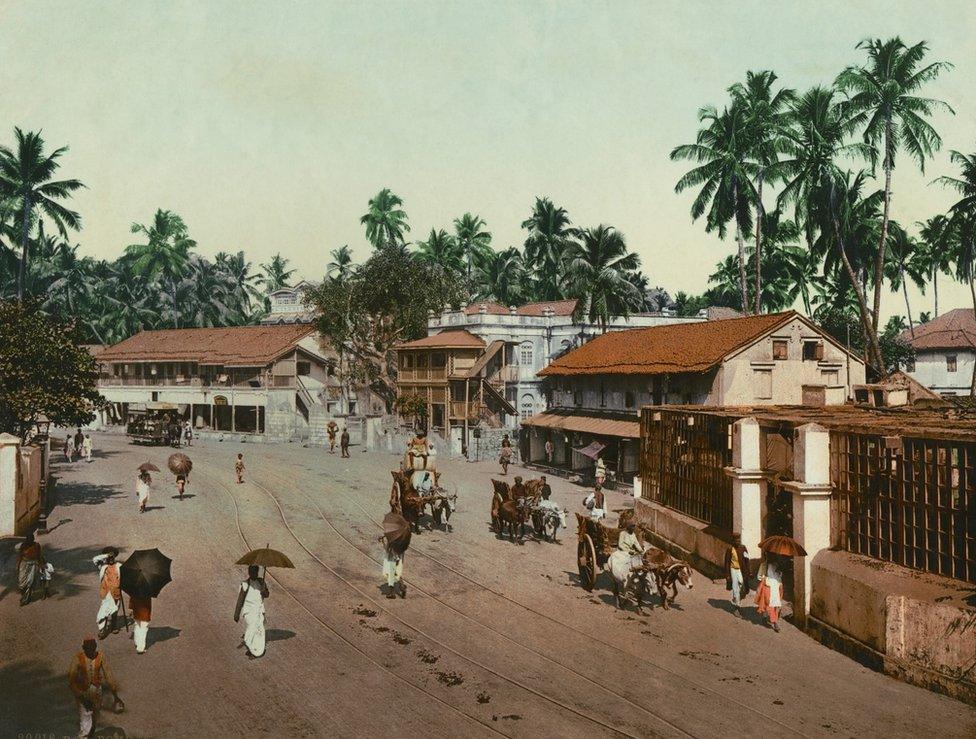
This photograph of Girgaum Road, in Bombay (now known as Mumbai), is an example of an early colour photography process, the photochrom. Black-and-white negatives were exposed on to “tint stones” to make mass-produced images for the tourist market. This was much quicker than hand-tinting each print.
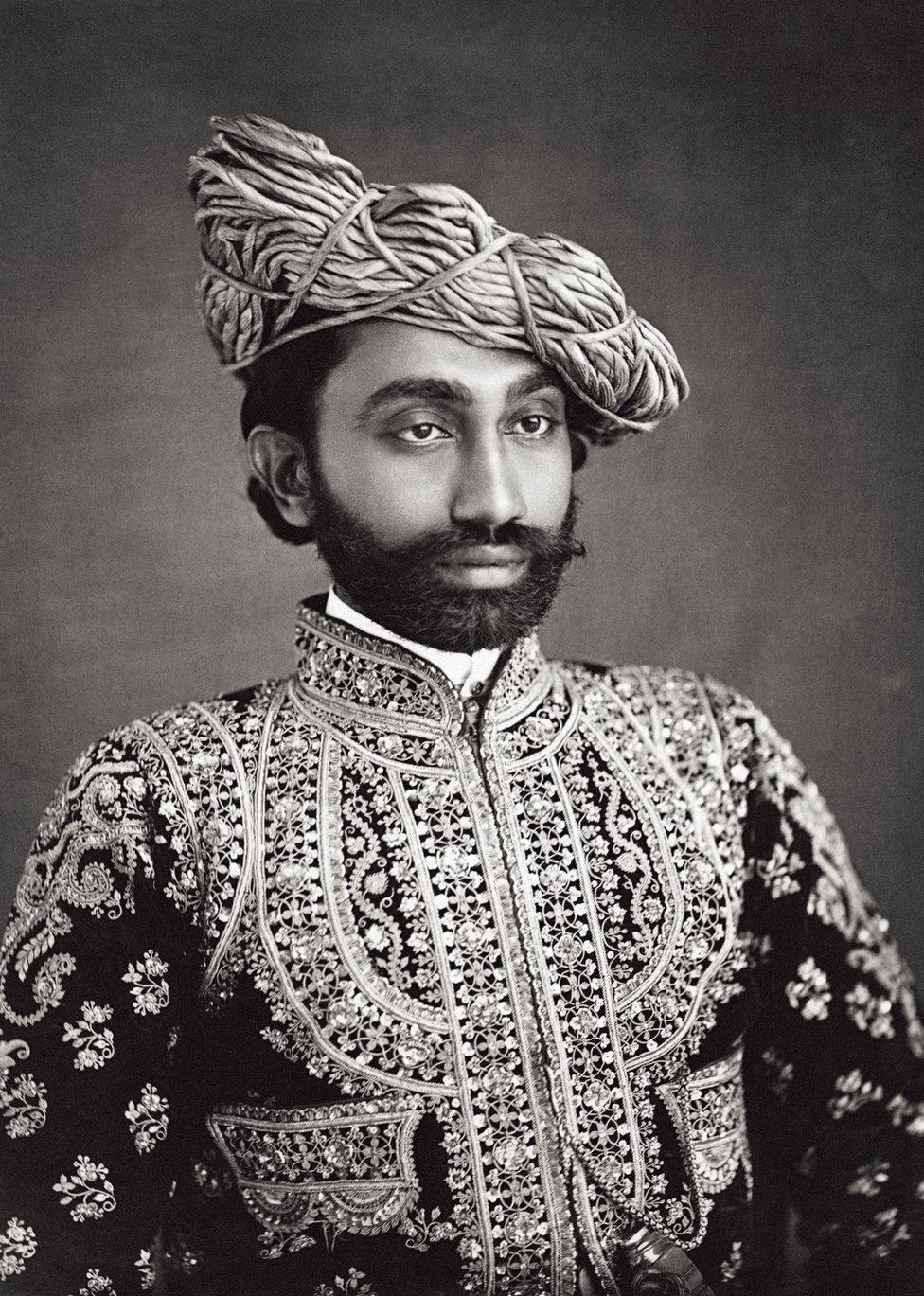
The twisted coils of the Raja Sahib of Liniri’s fashionably stitched pugree headwear look like silver vines, and his clothing is covered with incredibly ornate detail. During the British Raj, rulers such as these had their powers diluted, but their public profile maintained. This gave the impression of an Indian government separate from British colonial rule.
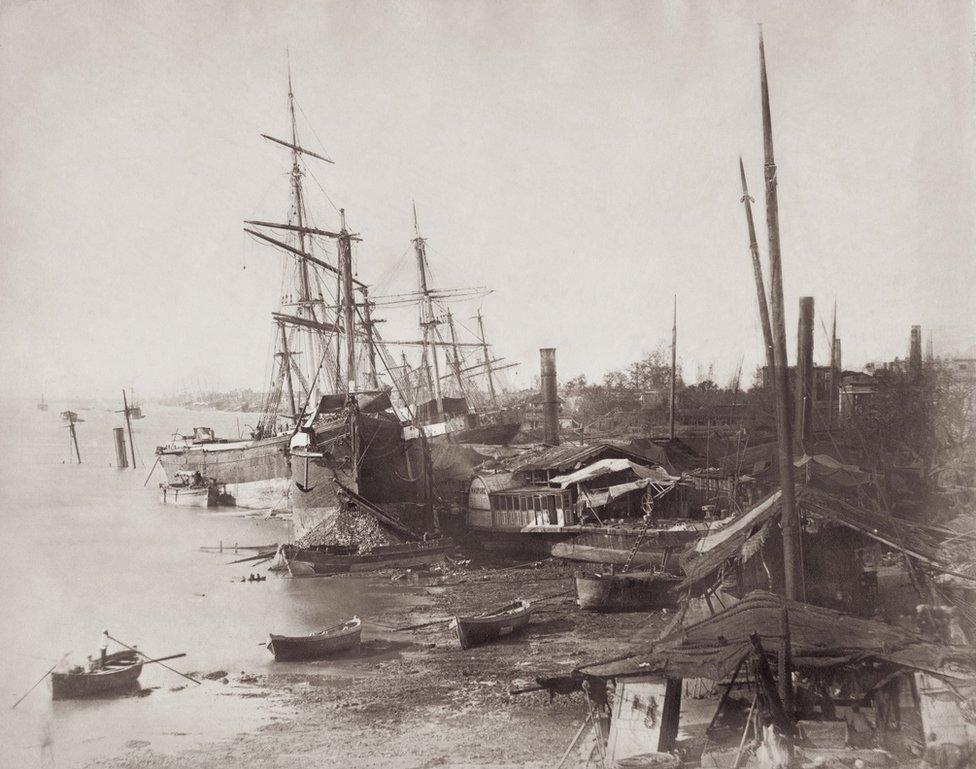
Taken in about 1856, the tall masts of these tea clippers in a Bombay harbour show the dominance of the East India Company. As early as 1855, the company was despatching photographers, rather than draughtsmen, to survey Indian territories and antiquities. British military officers were also given cameras.
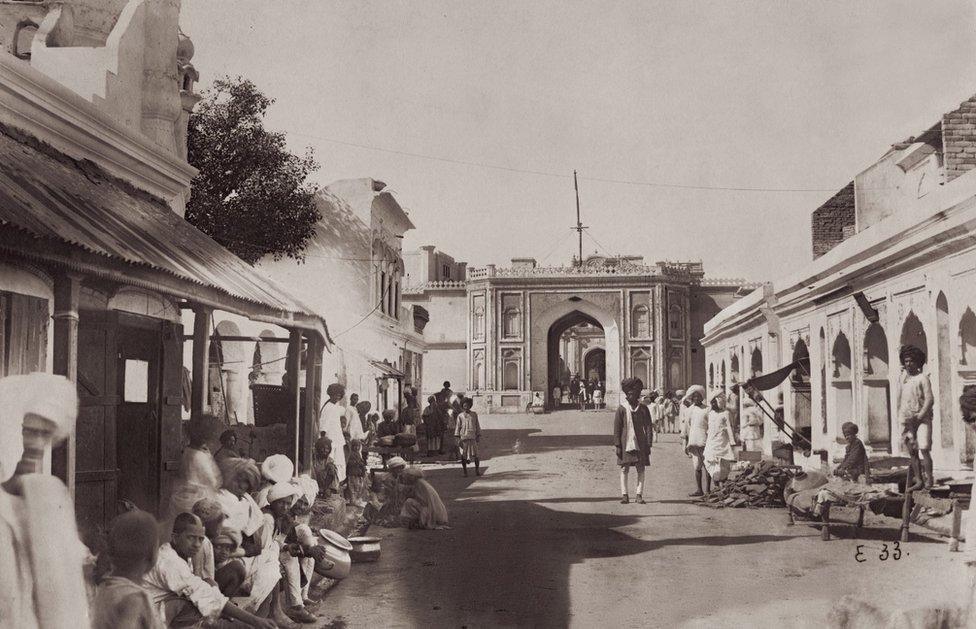
As photographic exposure times shortened, it became possible to take less static pictures and more relaxed portraits. Without colour, however, it was impossible to tell that the City Palace at the end of this Jaipur street was made of pink stucco, originally painted to mark the visit of the Prince of Wales in 1875-76.
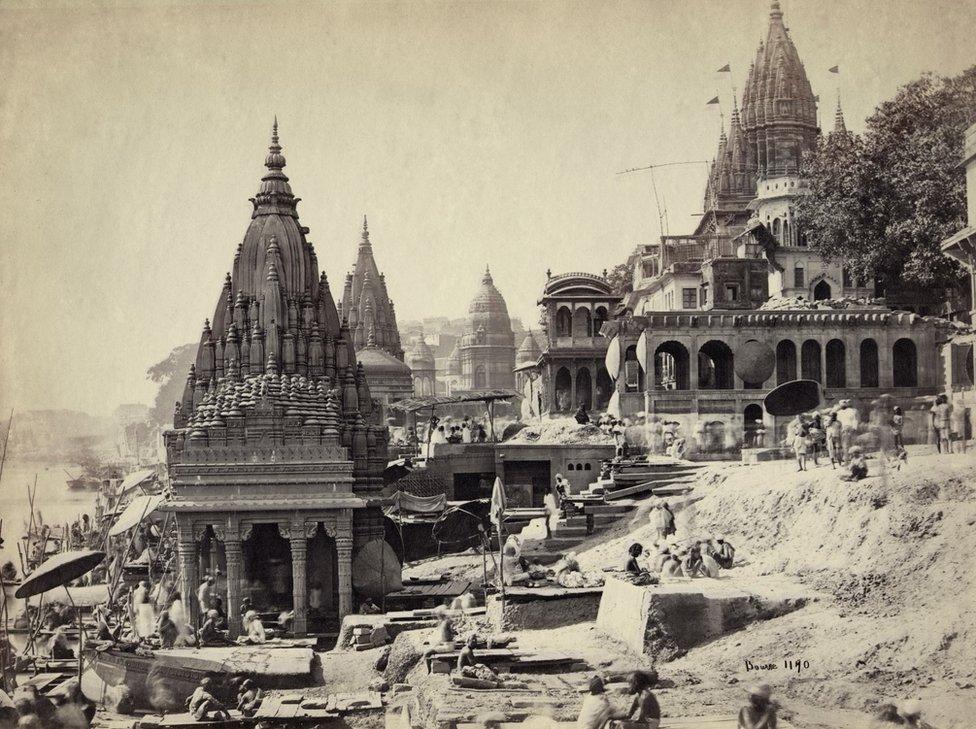
One of the best photographers of 19th Century India was Samuel Bourne. Images such as this one of Manikarnika Ghat, on the River Ganges, are more impressive considering the Indian climate. In dry spells, dust would settle on the glass plates, leading to spotting on the prints. In wet seasons, mildew would grow on the wooden body of the camera. Heat would destabilise the chemicals, and the lack of readily available water for washing the plates was also a problem.
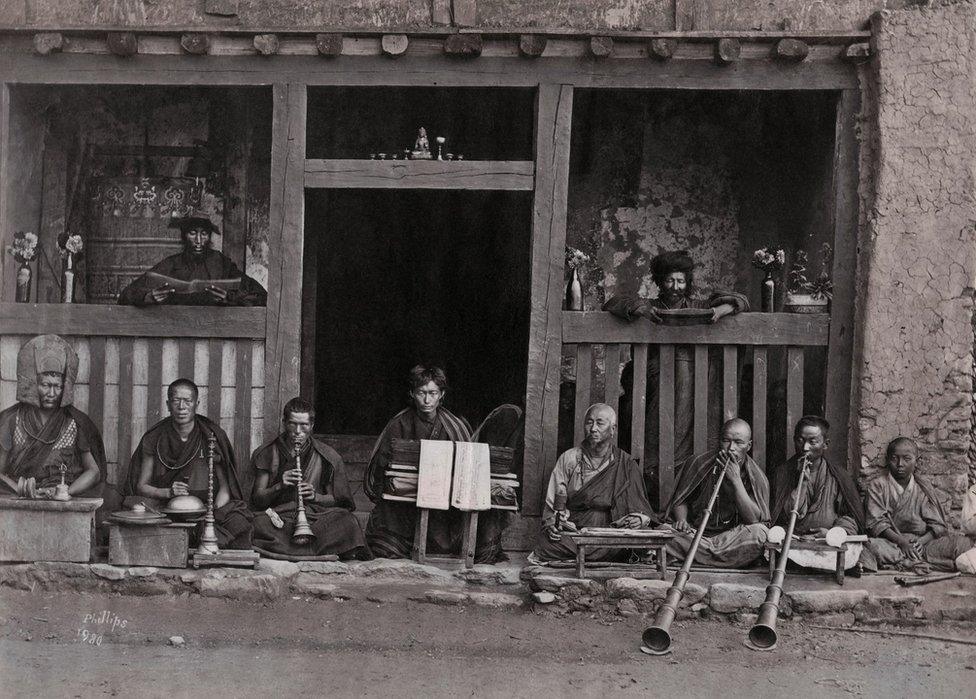
As well as surveying the geography, official photographers were told to capture the people of India. This row of Buddhist musicians in Darjeeling is an example of efforts to capture tribes and customs.
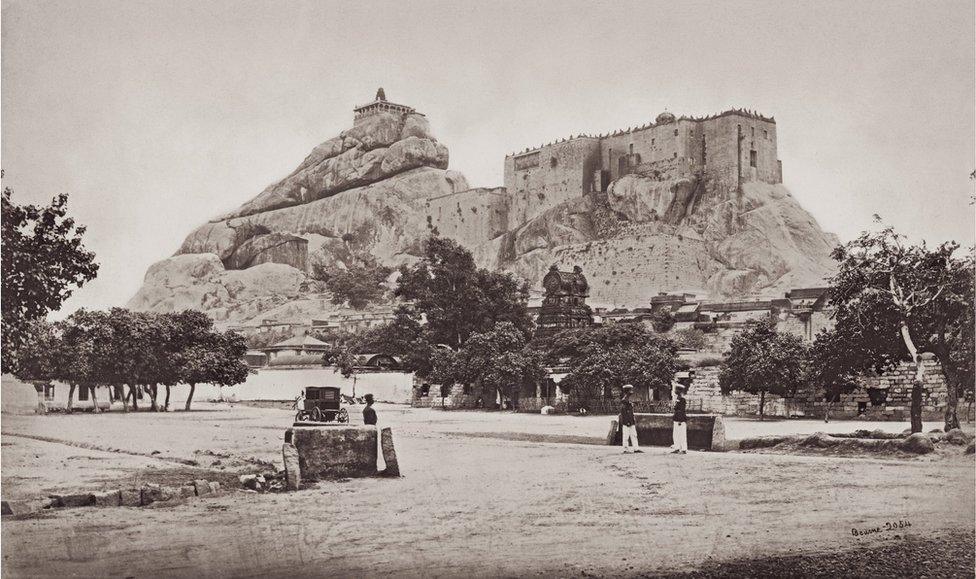
The rock formation at Tiruchirappalli (formerly Trichinopoly), in the state of Tamil Nadu, is one of the oldest in the world. The dramatic geography clearly interested Samuel Bourne, but the rock was also a scene of an early victory by the British Army. This photograph is where ancient and modern colonial history combines.
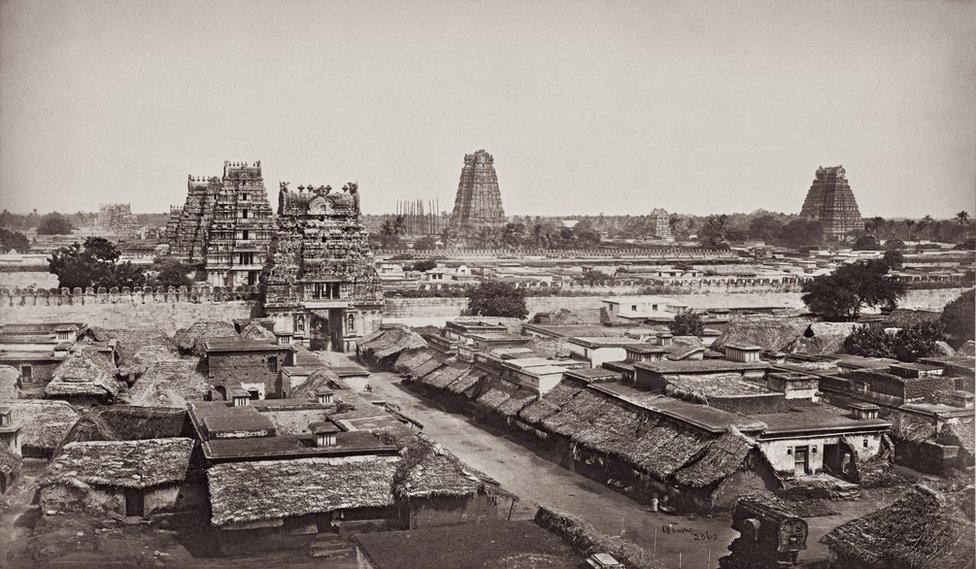
A Hindu temple built in the Tamil style, the Sri Ranganathaswamy is one of the largest religious complexes in the world. Bourne’s images of landmarks were popular with the British Raj, because it made it seem like it was involved in the cultural history of India. Indian Treasures is at the Getty Images Gallery, London, until 7 October. Text by Melanie Hough.
- Published27 July 2017
